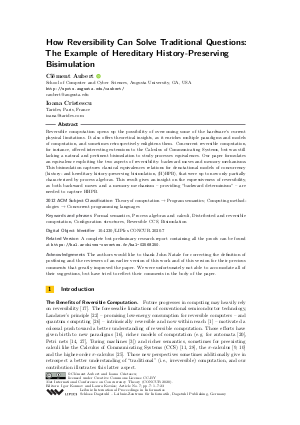@InProceedings{aubert_et_al:LIPIcs.CONCUR.2020.7,
author = {Aubert, Cl\'{e}ment and Cristescu, Ioana},
title = {{How Reversibility Can Solve Traditional Questions: The Example of Hereditary History-Preserving Bisimulation}},
booktitle = {31st International Conference on Concurrency Theory (CONCUR 2020)},
pages = {7:1--7:23},
series = {Leibniz International Proceedings in Informatics (LIPIcs)},
ISBN = {978-3-95977-160-3},
ISSN = {1868-8969},
year = {2020},
volume = {171},
editor = {Konnov, Igor and Kov\'{a}cs, Laura},
publisher = {Schloss Dagstuhl -- Leibniz-Zentrum f{\"u}r Informatik},
address = {Dagstuhl, Germany},
URL = {https://drops-dev.dagstuhl.de/entities/document/10.4230/LIPIcs.CONCUR.2020.7},
URN = {urn:nbn:de:0030-drops-128196},
doi = {10.4230/LIPIcs.CONCUR.2020.7},
annote = {Keywords: Formal semantics, Process algebras and calculi, Distributed and reversible computation, Configuration structures, Reversible CCS, Bisimulation}
}

 Creative Commons Attribution 3.0 Unported license
Creative Commons Attribution 3.0 Unported license


